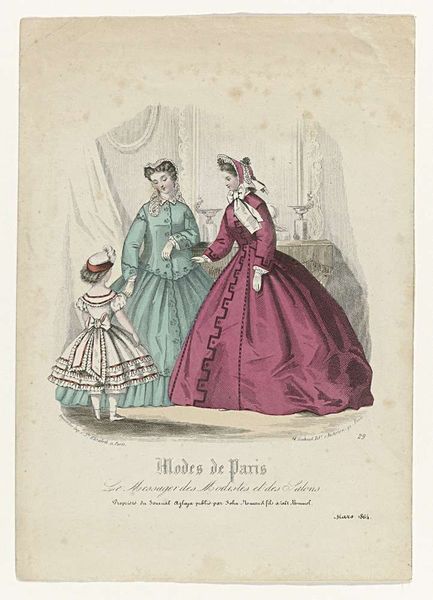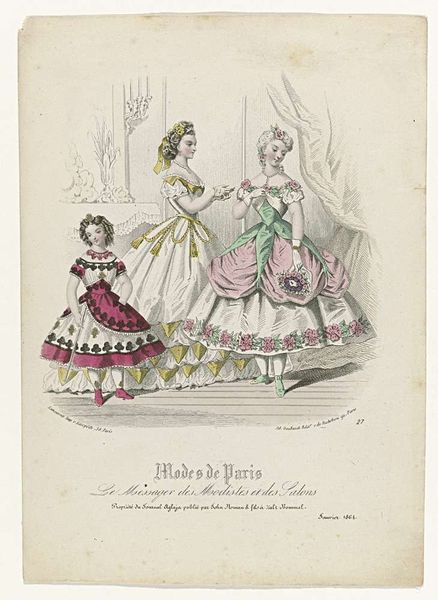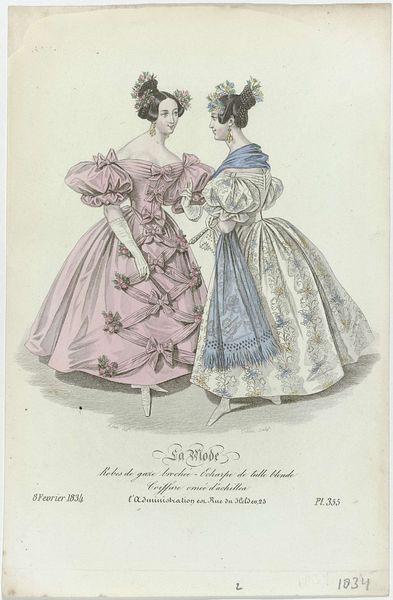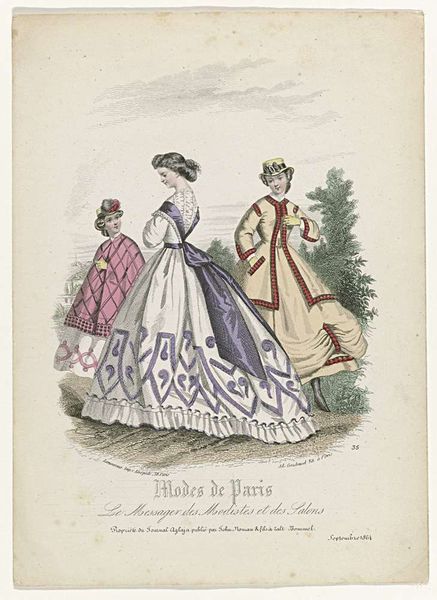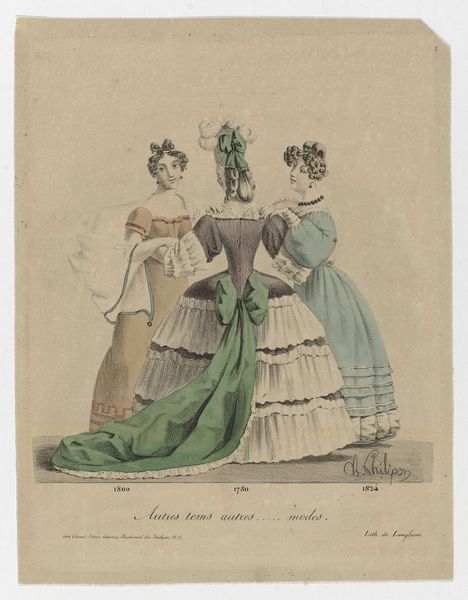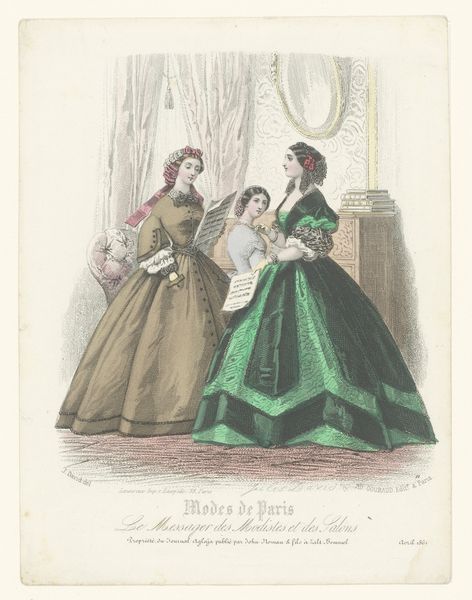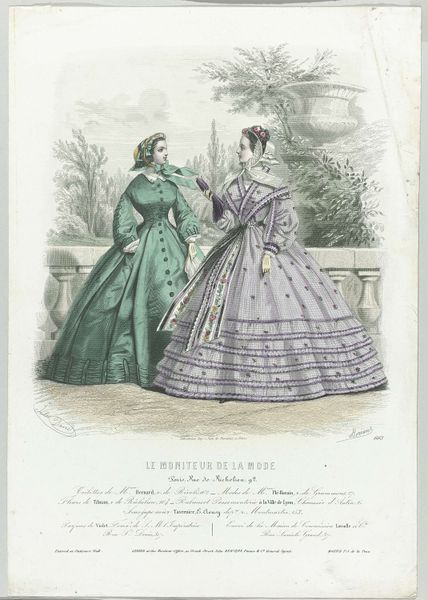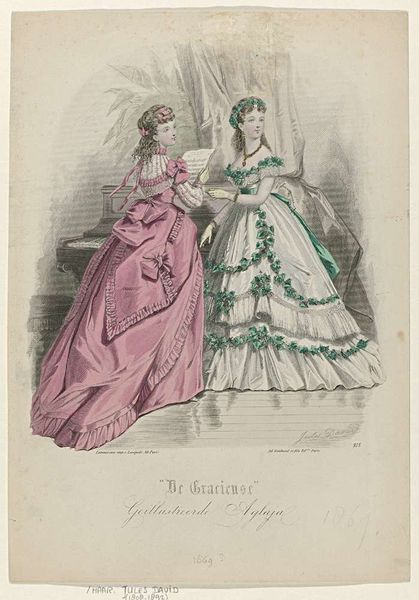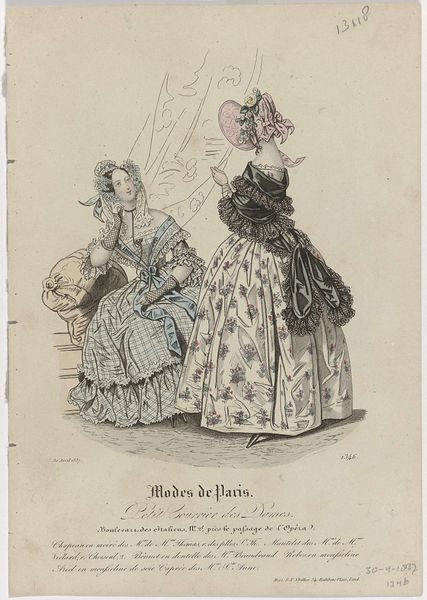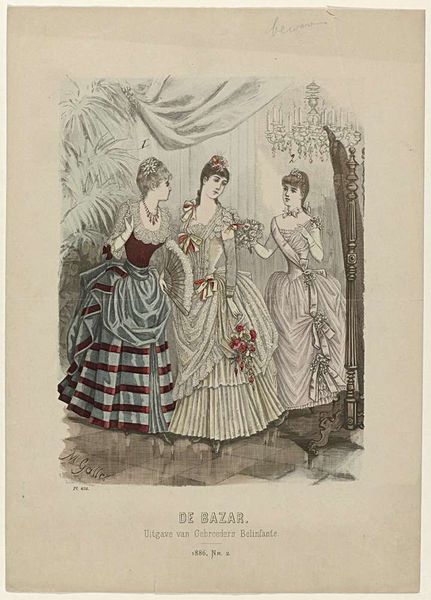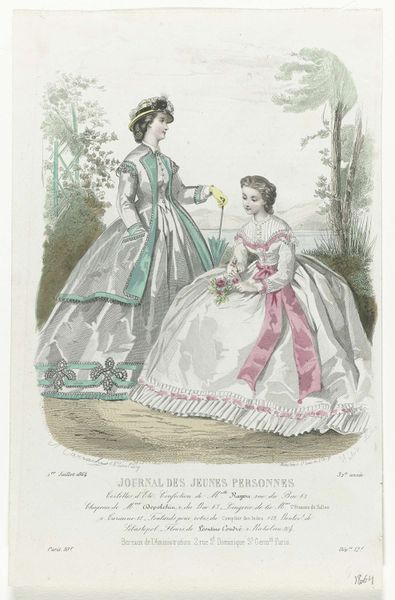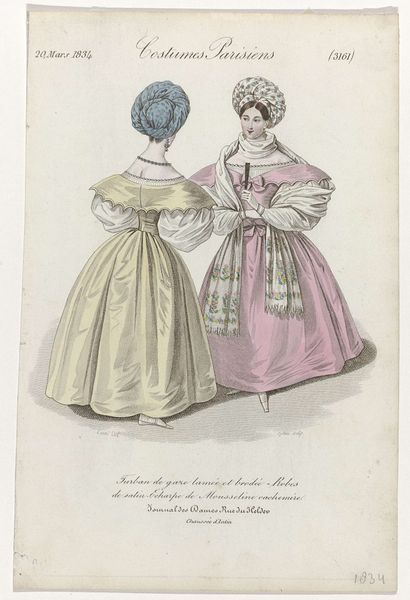
Le Messager des Modistes et des Salons, Modes de Paris, Journal Aglaja, février 1863 1863
0:00
0:00
Dimensions: height 201 mm, width 148 mm
Copyright: Rijks Museum: Open Domain
This fashion plate was printed in Paris in February 1863, by an anonymous artist for the Journal Aglaja. It showcases the styles of the Second Empire, rendered with delicate lines and soft colors using lithography, a printmaking technique known for its ability to capture fine detail. The plate served as a vital tool for modistes—dressmakers—and their clientele. Beyond aesthetics, the image hints at the labor-intensive processes involved in creating these garments. The elaborate ruffles, pleats, and embellishments signify hours of skilled handwork, reflecting the social status of those who could afford such luxury. The print itself, produced through a repeatable process, also speaks to broader trends of industrialization and consumption, connecting artistry and commerce, as well as the designer, maker and consumer. By considering the material conditions of its creation, we gain insight into both the artistic practices and social values embedded within this artifact of fashion history.
Comments
No comments
Be the first to comment and join the conversation on the ultimate creative platform.
